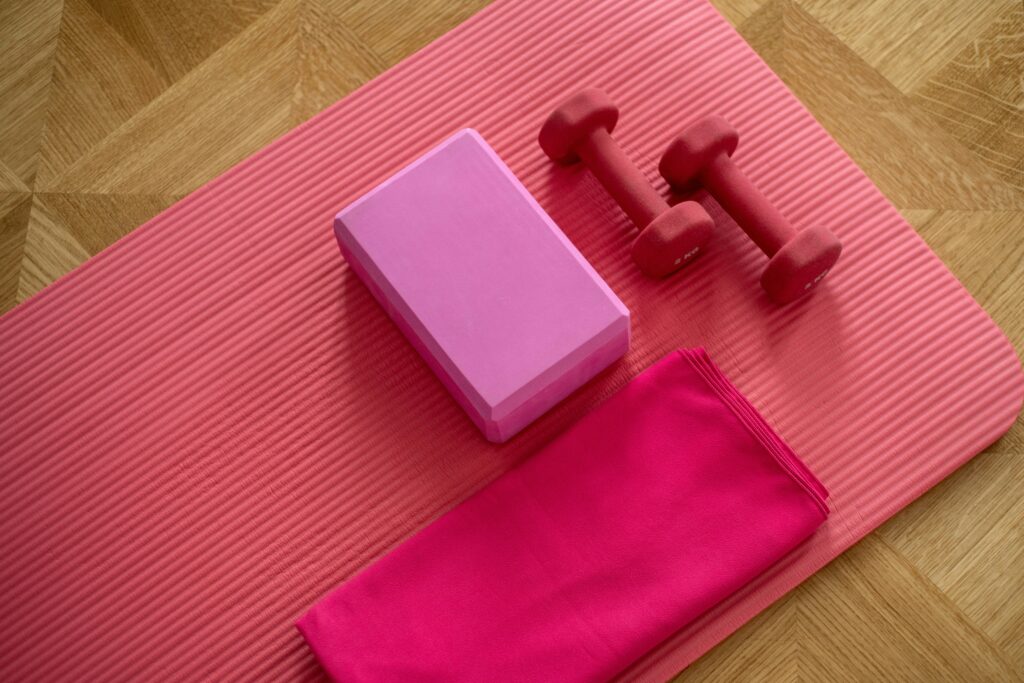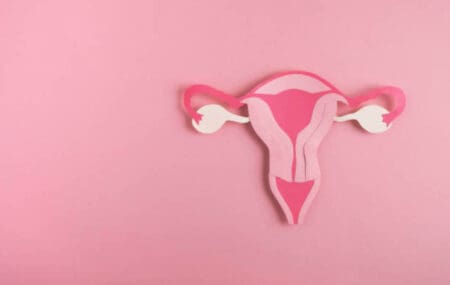
Staying Active During Your Menstrual Cycle: Managing Hormonal Changes and Energy Levels
Periods often bring a range of symptoms — discomfort, fatigue, mood changes — that can make skipping workouts feel tempting. But, staying active during your menstrual cycle is one of the best ways to boost your mood, ease cramps, and support your overall well-being. Movement doesn’t have to be intense to be effective. It’s about learning what your body needs and working with your natural rhythms.
In this guide, we explore how hormonal changes impact energy levels and the best ways to stay active throughout your cycle, with tips to keep you feeling strong, balanced, and motivated.
How does the menstrual cycle work?
The menstrual cycle typically lasts around 28 days, but every body is different. It can be divided into four phases: the menstrual phase (days 1–5), the follicular phase (days 6–14), ovulation (days 14–16), and the luteal phase (days 17–28). Each phase is characterised by distinct hormonal changes that may affect your energy, mood, and physical performance. Knowing what to expect during each phase can help you adapt your activity levels accordingly.
What happens to my body during exercise?
When you exercise, your body undergoes a range of changes to support your activity. Your heart pumps faster to deliver oxygen-rich blood to your muscles, while your breathing deepens and quickens to increase oxygen intake. At the same time, your muscles contract and work harder, helping pump blood back to your heart more efficiently. This coordinated effort fuels your body for physical activity and promotes overall health.
Exercise also triggers the release of various hormones, such as those that regulate glucose levels, enhance bone and tissue growth, and even boost libido. One standout group of hormones is endorphins — known as your body’s natural painkillers. These powerful chemicals alleviate discomfort and reduce anxiety and depression, while uplifting your mood. For those dealing with premenstrual syndrome (PMS) or period pain, endorphins can be a game-changer, helping to ease cramps and improve emotional well-being.
Should I rest or train during particular phases of my menstrual cycle?
At the moment, there is a lack of clear evidence that dictates how women should be training. The science behind training during different phases of the menstrual cycle is still evolving, and there’s no universal rulebook. Every person’s cycle is unique, and hormones can vary significantly between individuals. Because of this, a personalised approach is key — one that aligns with how your body feels and responds to exercise. One way of doing this is a period tracking app, like Taahirah. Tracking your cycle alongside your energy levels and workouts can offer valuable insights into how you’re feeling at different times of the month.
Can exercise help with PMS?
Research shows that exercise can be beneficial both in the days leading up to your period and during menstruation itself. PMS symptoms, such as bloating, breast tenderness, irritability, and low mood, can affect everyone differently. Engaging in moderate physical activity — like walking or yoga — helps release those feel-good endorphins, which can improve your mood and reduce pain associated with cramps and headaches.
Whether it’s a gentle stretch, a brisk walk or a full strength training regimen, moving your body during this time can make a significant difference in how you feel. The key is to choose activities that feel manageable and enjoyable for you.
Tailoring activities to your cycle
Menstrual phase (days 1-5)
This phase marks the start of your cycle when bleeding occurs. During this time, hormone levels — particularly oestrogen and progesterone — are at their lowest. This drop can lead to fatigue, cramps, and mood swings, leaving you feeling sluggish, tired, or less motivated for intense physical activity. It’s perfectly normal to feel this way!
Gentle activities can be helpful. If you’re not comfortable with intense exercise, take slow walks in nature, do light yoga or stretching to ease cramps, or practise restorative exercises like meditation and breathing techniques. These activities can help alleviate discomfort and improve your overall mood.
That said, there’s no current scientific evidence suggesting you must avoid more intense workouts during menstruation. If weightlifting, running, or high-intensity training feels right for your body, you can absolutely continue your routine!
If your energy is low or cramps are intense, avoid forcing yourself to exercise. Everybody experiences menstruation differently, so listen to your body’s cues. Rest when needed, but know that even light activity can help reduce bloating, fatigue, and period pain.
Pro tip: Carbohydrates are your friends. Your body is better at metabolising them for energy during the follicular phase (days 1–13), making them the ideal fuel to power your workouts and keep you energized.
Follicular phase (days 6-14)
In the early part of this phase (including the end of your menstrual period), oestrogen levels remain low, which can contribute to lingering fatigue, slower recovery, and occasional cramps. Sticking to lower-intensity or recovery-focused exercises — like gentle yoga or low-impact cardio — can help your body adjust.
As the phase progresses, particularly around days 10–14, oestrogen levels begin to surge while progesterone remains low. This hormonal boost can bring increased energy, improved mood, and better recovery times, making it the perfect window to ramp up your exercise intensity. This is an optimal time for strength training, as higher estrogen levels support muscle building and recovery. Whether your goal is to build strength or hit a personal best, take advantage of this energy surge with activities like high-intensity interval training (HIIT), running, swimming, or group fitness classes.
Pro tip: Push your limits and explore new fitness challenges during this phase. Hydration and a nutrient-rich diet are essential to maintain energy and keep blood sugar levels steady. Focus on lean protein, healthy fats, and whole grains to support your body’s biological processes.
Ovulation (days 14-16)
Around the middle of your cycle, ovulation occurs, and with it comes a surge in oestrogen levels. This hormonal peak often leads to heightened energy, increased physical strength, and boosted libido. Mentally and physically, this is when you’re likely to feel at your strongest. You may also find yourself more socially motivated, making it a great time to enjoy group sports or activities.
This phase is ideal for high-intensity workouts. Competitive sports like tennis, football, or basketball, as well as strength-based activities like powerlifting, are excellent options. If you’re looking to achieve personal bests in fitness or try something new, now is the time to push your limits.
Pro tip: Use this window of peak energy and strength to set ambitious fitness goals or participate in competitions. With your body performing at its best, it’s the perfect opportunity to challenge yourself and see what you can do!
Luteal phase (days 17-28)
During the early luteal phase, oestrogen levels remain moderately high, allowing you to continue with higher-intensity workouts if you feel up to it. After ovulation, progesterone levels rise while oestrogen begins to decline. These hormonal changes can bring fatigue, mood swings, reduced endurance and increased appetite. Symptoms like bloating and fluid retention are common, which can make high-intensity exercise feel more challenging. Additionally, the slight increase in body temperature during this phase may cause discomfort during vigorous activities.
Switching to gentler forms of exercise can be helpful at this stage. Moderate cardio activities such as brisk walking or cycling, low-impact exercises like Pilates or swimming, and restorative practices like yoga can help alleviate discomfort and stabilise mood.
Pro tip: Try to avoid overexertion. Pay attention to your body’s needs and prioritise rest when necessary. Fuel your workouts with nutritious, slow-release carbohydrates like oats, beans, pulses, and whole grains to maintain energy levels. Incorporating magnesium-rich foods, such as tofu, leafy greens, lentils, and chickpeas, can also help reduce bloating and ease PMS symptoms. Note that it’s important not to cut carbs drastically – your body requires energy to function optimally. Instead, opt for fiber-rich options like sweet potatoes and butternut squash to curb cravings for processed snacks.
Final tips for staying active during your cycle
- Listen to your body: Your body is your best guide. Pay attention to how you feel during each phase of your cycle. If cramps, fatigue, or discomfort feel overwhelming, it’s perfectly okay to take a rest day or opt for lighter activities like stretching or yoga. Remember, rest is as important as movement.
- Choose enjoyable activities: Whether it’s strength training, a gentle yoga session, or a tennis match with friends, engaging in exercises that you genuinely enjoy makes it easier to stay consistent. The key is to find activities that uplift you both physically and emotionally. Note that it’s completely normal to find it challenging to engage in activities you usually enjoy during certain phases of your cycle. This doesn’t mean you need to completely abandon those exercises or switch them out every time. Instead, aim to stay consistent and give yourself grace as you navigate the natural ebbs and flows of motivation and energy.
- Plan your outfit for comfort: Wearing darker colors, longer tops, or layering up can help ease anxiety about potential leaks. Opt for looser-fitting gym clothes to stay comfortable, especially if you’re feeling bloated. Dressing comfortably can make a world of difference.
- Protect yourself: To feel fresh and worry-free, change your period product just before working out. This small step can help you stay hygienic, comfortable, and focused during your activities.
- Incorporate flexibility: Every day during your cycle may feel different. Some days you might feel energised and ready for a challenging workout, while other days may call for rest or lighter exercises. Listen to your body – you may want to spend less time working out on some days.
- Hydrate, hydrate, hydrate: Drinking plenty of water is crucial, especially during menstruation. Staying hydrated can help reduce bloating, ease cramps, and maintain your energy levels. Keep a water bottle handy before, during, and after exercise.
- Maintain a balanced diet: Fuel your body with wholesome, nutrient-rich foods. Incorporate leafy greens, fruits, nuts, and whole grains to support your energy needs. Foods rich in iron, magnesium, and omega-3s can also help reduce inflammation and combat fatigue.
- Consider supplements: If you experience severe menstrual symptoms, consult a healthcare professional about vitamins or supplements that might help, such as iron, vitamin B6, magnesium or omega-3 fatty acids. Try taking painkillers or similar medication if necessary to regulate temperature, dampen any cramps and help you stay active.
When to visit a doctor
If you’re dealing with severe symptoms related to your menstrual cycle, it’s important to consult a GP as your first step. Here are some helpful tips to make the most of your appointment:
- Make a list of the main symptoms: Before your appointment, jot down the main symptoms that are troubling you and how they affect your daily life. Are your periods unusually heavy, painful, or irregular? Are you experiencing symptoms outside your period, like unexpected spotting? Writing these details in a notebook or on your phone can help you stay focused during your consultation, especially if you’re feeling nervous or overwhelmed.
- Discuss your expectations: Think about what you want to achieve from your visit. Are you seeking a diagnosis, relief from symptoms, or perhaps a referral to a specialist? Clearly communicating your expectations can make it easier for your GP to develop an actionable plan tailored to your needs.
- Bring any relevant resources: If you’ve done any research beforehand, bring along any helpful resources, or notes you’d like to discuss. If you track your cycles using an app (note: taahirah app is coming to you soon!!) or calendar, sharing this data with your GP can provide valuable insights into your symptoms and patterns, making it easier to pinpoint any potential issues.
Fuel for thought
Embracing an active lifestyle during your menstrual cycle can significantly enhance your physical and emotional well-being. By understanding the hormonal changes your body goes through and making thoughtful adjustments to your routine, you can create a more balanced and fulfilling approach to fitness and self-care.
Stay attuned to your body, honour its unique signals, and remember that even small, consistent steps can lead to meaningful progress. Every effort counts — be kind to yourself, stay active, and continue to build strength in every sense of the word.

